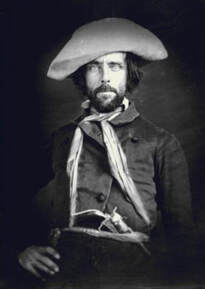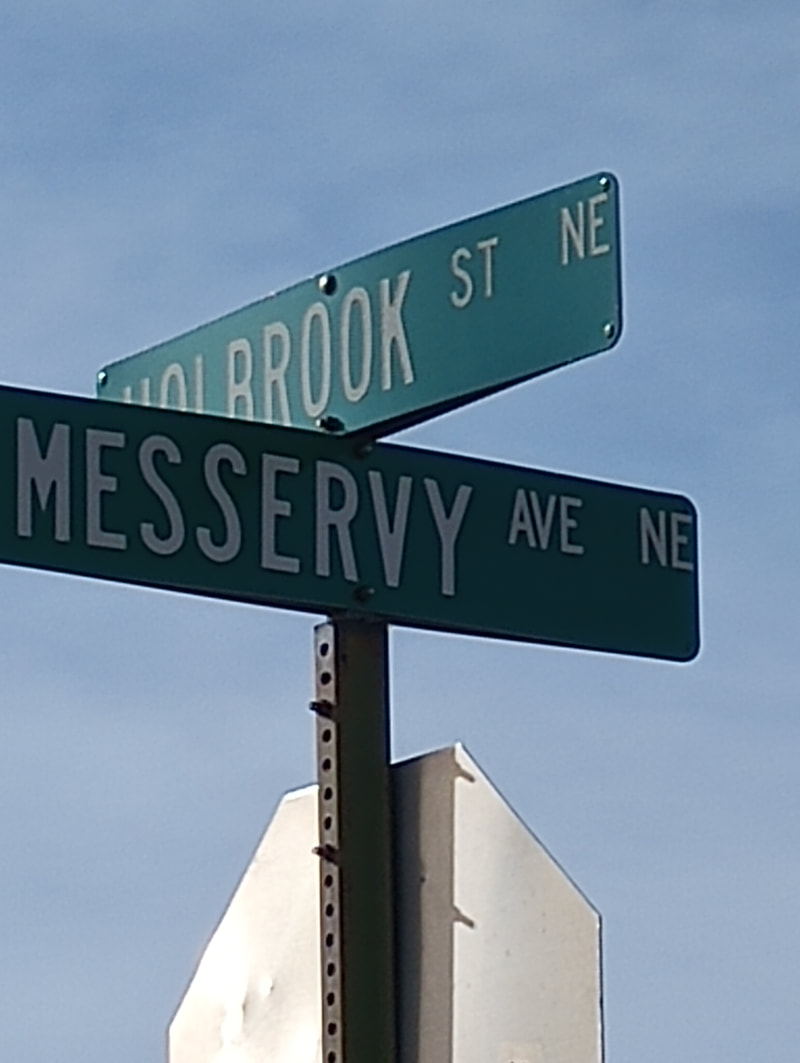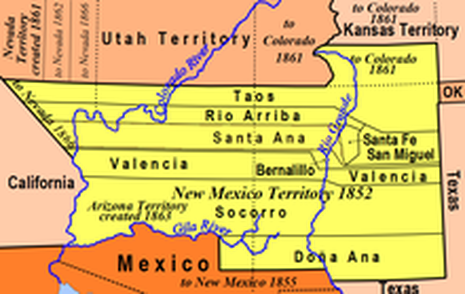Sometimes I come across a street name that makes me wonder. This happened recently when I was walking through an Albuquerque neighborhood names Heritage Hills with a couple of my friends. We came across a street named Messervy Avenue. Because of the neighborhood, I assumed it was a person’s name, and that the person had done something important, but I knew of no one in American history by that name, so I had to do a little research.  Turns out, the street was named after William Sluman Messervy, who was born in Salem, Massachusetts on August 26, 1812. Messervy was the eldest son in a family of ten children born to a sea captain in the East Indies trade and his wife. His middle name comes from his maternal grandfather, Captain William Sluman, who had been killed during the American Revolutionary War while in command of a private armed vessel. Messervy began his career in business as a clerk and book-keeper in a large firm in Boston. In 1834, he got a job in St. Louis, Missouri, and by 1839, he was in business for himself, traveling on the Santa Fe Trail and trading with Mexico, including the Mexican territory of Santa Fe de Nuevo México, which later became the American state of New Mexico. Messervy was in Chihuahua when the Mexican–American War began in April 1846. Like other United States citizens, he was interned there, but freed by troops led by Colonel A. W. Doniphan after the Battle of the Sacramento River in February 1847. When the war ended early in 1848, Messervy moved to Santa Fe, which had been annexed by the U.S. and was under an American provisional government. By 1851, his trading firm called Messervy and Webb had the leading merchant house in New Mexico, sending between sixty and seventy wagons along the Santa Fe trail each year. It delivered general merchandise to the region’s natives in addition to American settlers and federal and territorial government officials throughout New Mexico. In June 1850, New Mexico adopted a state constitution and Messervy was elected to serve as its first member of Congress. However, Messervy was never officially seated because Congress did not accept New Mexico as a state. The Territory of New Mexico, organized when the Compromise of 1850 passed that September, recognized another man, Richard Hanson Weightman, as New Mexico Territory’s Congressional delegate. This setback did not end Messervy’s political career. On April 8, 1853 President Franklin Pierce appointed him to be the Secretary of the New Mexico Territory. A year later, he became its acting Governor when its appointed governor, David Meriwether, went out of state. Messervy was then appointed superintendent of Indian affairs in New Mexico, a difficult position since the Jicarilla branch of the Apaches were then at war with America. By July, the stress of his three jobs had become too great. He resigned his positions and sold both his house on the Santa Fe Plaza and the Exchange Hotel, Santa Fe’s liveliest venue. He returned to Salem, where he served as mayor from 1856 to 1858, was a director of some local corporations, and was active in scientific and literary societies. He was also a justice of the peace at Salem. Although he had been a Democrat throughout his life, he joined the Republican party during the Civil War. Messervy died after a long illness on February 19, 1886. William Sluman Messervy may not be a household name, even in New Mexico, but he had an important role in the Americanization of New Mexico, and he was important enough that someone thought to name a street in Albuquerque after him. Jennifer Bohnhoff taught New Mexico history at the middle school level for a number of years. She is now an author of historical and contemporary fiction for middle school through adult readers, including Rebels Along the Rio Grande, a trilogy of novels set in New Mexico during the Civil War. |







No comments:
Post a Comment